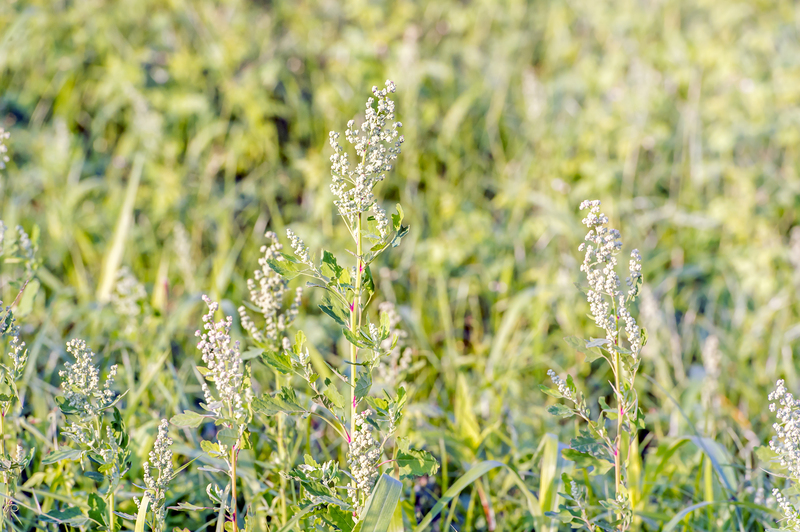Shielding Your Garden Plants from Frosty Winters
Posted on 27/05/2025
Shielding Your Garden Plants from Frosty Winters: Essential Strategies for Every Gardener
When the crisp air of autumn turns biting and the first frosts threaten to blanket your beloved garden, every green thumb wonders: How can I shield my garden plants from freezing winter temperatures? Frost can obliterate months of hard work and passion in a single night. Thankfully, with some preparation and the right strategies, you can protect your cherished garden from the harsh grip of winter and emerge in spring with healthy, thriving plants. This comprehensive guide delves into proven methods and expert advice for protecting plants from frost damage, so you can enjoy a flourishing garden year-round.

Understanding Frost and Its Effects on Garden Plants
Before we dive into the practical ways of shielding garden plants from winter frost, it's essential to understand the nature of frost and why it's so damaging to plants.
What is Frost?
Frost forms when the air temperature drops below the freezing point of water (0?C or 32?F), causing water vapor in the air to solidify on cold surfaces. For plants, this often means delicate tissues freeze, damaging cell walls and disrupting vital functions. Even hardy, winter-resistant plants can suffer during prolonged or unexpected frosts.
How Frost Damages Plants
- Cellular Damage: Freezing temperatures cause water within plant cells to expand, rupturing membranes and leading to blackened, mushy leaves or stems.
- Interrupted Nutrient Flow: Ice crystals can clog the vascular system of plants, inhibiting water and nutrient movement.
- Reduced Growth in Spring: Severely frost-damaged plants often struggle to recover, showing delayed or stunted growth after winter.
Vulnerable Plants in Frosty Winters
Some plants are more susceptible than others, including:
- Young seedlings and newly transplanted plants
- Tropical and subtropical species (like citrus, tomatoes, peppers)
- Succulents and cacti
- Flowering annuals and tender perennials
- Potted plants with exposed roots
Proven Methods for Frost Protection in Gardens
Gardening experts agree: proactive planning is key to winter plant protection. By employing a combination of physical barriers, microclimate manipulation, and smart gardening habits, you can shield your garden from extreme cold.
1. Mulching: Nature's Blanket for Your Plants
Mulch is an effective insulating layer that keeps soil temperatures stable during frosty nights.
- Organic mulches (straw, leaves, wood chips, shredded bark) are best for beds and borders.
- Apply a layer 2-4 inches thick around the base of vulnerable plants to shield roots from freezing.
- Be sure to pull mulch away from stems and trunks to prevent rot.
Pro tip: Use a layer of pine needles or dry leaves for easy removal in spring!
2. Covering Plants: Row Covers, Cloches, and Blankets
Physical covers are one of the most effective methods of plant frost protection.
- Row covers: Lightweight, breathable fabrics (like horticultural fleece or Reemay) draped over plants create a barrier without suffocating them.
- Cloches: Transparent domes made of glass or plastic protect individual plants and young seedlings from frost while letting in light.
- Frost blankets and old sheets: Drape over plants overnight and remove in the morning once temperatures rise.
Important: Make sure covers reach the ground and are secured to prevent heat from escaping.
3. Watering Before a Freeze
While it may seem counterintuitive, watering your garden before a frost can actually help:
- Moist soil retains more heat than dry soil, protecting roots against cold.
- Water emits heat overnight, helping to moderate temperature fluctuations.
Tip: Be careful not to overwater, which can cause root rot in cold conditions.
4. Windbreaks and Protective Structures
Cold winter winds can intensify frost damage. Erect simple windbreaks using:
- Burlap screens
- Temporary wooden or polypropylene panels
- Garden fencing wrapped with plastic or fabric
These barriers help reduce chilling winds, making your garden more resilient to winter frost.
5. Relocating Potted and Container Plants
Potted plants are especially vulnerable, as their roots are exposed on all sides. Move containers to:
- Unheated greenhouses or cold frames
- Up against house walls where warmth radiates
- Under porch overhangs or inside garages on the coldest nights
Don't forget: Insulate the pots with burlap or bubble wrap for extra protection!
Advanced Techniques for Winter Plant Protection
6. Creating Microclimates
Leveraging microclimates in your yard can make a surprising difference. South-facing walls, hedges, or fences trap heat from the sun during the day and radiate warmth at night. Plant tender species near these "hotspots" and use rocks or masonry to amplify the effect.
7. Anti-Transpirant Sprays
Coating leaves with an anti-transpirant (available at garden centers) helps reduce water loss and leaf damage during cold snaps. These sprays are especially useful for:
- Evergreen shrubs and trees
- Broadleaf evergreens like camellias and rhododendrons
Always follow manufacturer instructions for application.
8. Winter Pruning: The Right Approach
Proper timing is crucial: avoid pruning in late autumn, as it encourages tender new growth susceptible to frost. Wait until late winter or early spring to prune most plants. For damaged branches, remove only after danger of frost has passed.
9. Building Cold Frames and Polytunnels
A cold frame is a bottomless box with a clear lid (glass or plastic) that harnesses the sun's warmth. Cold frames are perfect for overwintering seedlings, herbs, and salads.
- Place over rows or individual plants to add 5-10 degrees of warmth.
- Polytunnels (mini greenhouses) shelter large beds or even entire garden areas from snow, wind, and ice.
Both structures are ideal for extending the growing season and protecting sensitive species.
Preparation Checklist: Winterizing Your Garden
- Mulch all vulnerable beds and borders
- Install or prepare floating row covers and cloches
- Position potted plants in sheltered locations
- Water deeply before a hard freeze
- Build or set up windbreaks and cold frames as necessary
- Monitor weather forecasts regularly for frost advisories
Common Mistakes to Avoid When Protecting Plants in Winter
Even experienced gardeners can make mistakes while trying to shield garden plants from frost. Avoid these pitfalls:
- Leaving covers on too long: Take off covers during the day to avoid overheating and humidity buildup.
- Piling mulch directly on stems: This can cause rot and encourage pests.
- Pruning too late in the season: New growth will not be hardened off in time for frost.
- Neglecting to water during dry, cold spells: Plants can dry out even in winter, especially evergreens.
Help your garden recover from occasional damage by pruning away affected tissue in spring and boosting with a gentle, slow-release fertilizer.

Frequently Asked Questions: Garden Plant Frost Protection
Will covering plants with plastic protect them from frost?
Plastic can be used, but with caution. Plastic sheeting should never touch plant foliage directly, as it transfers cold efficiently and can cause more frost damage. Always use hoops or supports to keep plastic off leaves, and remove during the day to prevent overheating.
How can I tell if my plants have frost damage?
Look for wilted, blackened, or mushy leaves and stems as sure signs of freezing injury. Damaged areas should be pruned away in spring after new growth emerges.
Can I use household items to protect my plants from frost?
Absolutely! Sheets, blankets, cardboard boxes, and even upside-down buckets can offer temporary night-time protection for vulnerable specimens. Just remember to remove covers during sunny days for air circulation.
What's the best mulch for winter protection?
Leaf mold, straw, shredded bark, and pine needles are excellent insulators that can be easily removed when spring arrives.
Conclusion: Ensuring Year-Round Garden Success
With a bit of planning and resourcefulness, gardening in frosty winters can be both successful and deeply rewarding. By using mulch, strategic coverings, water, and protective structures, you'll increase your garden's resilience and see your plants bounce back as soon as spring returns. Remember, the key to effective frost protection for garden plants lies in understanding your plant's specific needs and acting before a hard freeze arrives.
Invest in your gardening future--start shielding your plants from frosty winters today for a lush, vibrant garden in every season!

